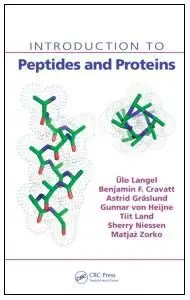Introduction to Peptides and Proteins by Ulo Langel, Benjamin F. Cravatt, Astrid Graslund and N. G. H. von Heijne
English | 2009 | ISBN: 1420064126 | 420 pages | PDF | 85,8 MB
English | 2009 | ISBN: 1420064126 | 420 pages | PDF | 85,8 MB
Human cells produce at least 30,000 different proteins. Each has a specific function characterized by a unique sequence and native conformation that allows it to perform that function.
While research in this post-genomic era has created a deluge of invaluable information, the field has lacked for an authoritative introductory text needed to inform researchers and students in all of those fields now concerned with protein research.
Introduction to Peptides and Proteins brings together some of the most respected researchers in protein science to present a remarkably coherent introduction to modern peptide and protein chemistry. The first sections of the book delve into –
• Basic peptide and protein science from assembly through degradation
• Traditional and emerging research methods including those used in bioinformatics and proteomics
• New computational approaches and algorithms used to find patterns in the vast data collected by sequencing projects
After providing a foundation in tools and methods, the authors closely examine six protein families, including representative classes such as enzymes, cell-surface receptors, antibodies, fibrous proteins, and bioactive peptide classes. They concentrate on biochemical mechanisms and where possible indicate therapeutic or biotechnical possibilities.
Then focusing on clinical aspects, the authors investigate misfolding as found in prion diseases, miscleavage as found in Alzheimer’s, and mis-sequencing as found with some cancers. Drawing from some of their own research, the authors summarize recent achievements and emerging applications. They discuss the use of proteins and peptides as drugs and the solid-phase synthesis required for drug production. They also look at the use of peptides as functional biomolecules and research tools.
No longer just the domain of biologists, many key advances in protein research started in physics labs and have involved contributions from a host of fields including statistics, drug development, genetics, and chemical spectroscopy. Introduction to Peptides and Proteins provides researchers across these fields with the thorough foundation needed to explore all the potential that protein research offers.



